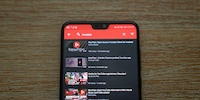
Background information
NewPipe: like YouTube for Android, but better
by Dominik Bärlocher

Apple's World Wide Developer Conference has begun. During the opening keynote address, Apple executives announced the new features to come. In a nutshell: more intelligence, a completely redesigned look for iOS and Siri, and a closer relationship between iPadOS and the revamped version of macOS.
This is probably the biggest overhaul of the iOS operating system since former Apple chief designer Jony Ive redesigned all the home screen icons back in 2013. That was back in the days of Apple iOS 7. iOS 14 will be released in autumn this year, and the upgrade isn't short on ambition. At the World Wide Developer Conference, or WWDC to those in the know, Apple CEO Tim Cook and his team unveiled their cards and presented an exciting new version of their software.
Craig Federighi, senior vice president in charge of software engineering, takes to the virtual stage. He announces that Apple has reinvented some of the most remarkable aspects of the iOS operating system. This isn't just marketing blah-blah announcing a colour change in some app. Soon, your home screen won't just consist of 6×5 icons and the dock.
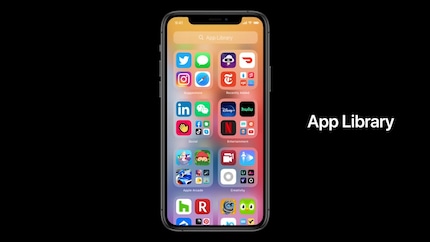
The home screen has been completely redesigned. Instead of a 6×5 layout, apps should now organise themselves in App Library. All the apps you download to your iPhone are automatically sorted by the device into a sort of folder. According to Craig Federighi, Apple's aim is to solve a problem: the more apps you have, the more home screens you have. You certainly tend to forget the ones that are in the last screens and therefore don't use them.
App Library can be found on the right, next to the last page of the home screen. Because this feature wasn't just added to iOS, it's now possible to hide home screens. Long press a home screen until it goes into 'jiggle mode', as Federighi calls it. This is where you can sort your apps. Zoom out and you can hide different pages on the home screen.
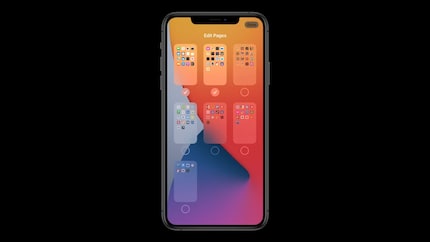
App Library sorts the applications in the search field alphabetically or graphically according to criteria developed by the on-board AI. There are folders with suggested apps, newly installed apps or sorted by category. Each folder is organised so that the most frequently used apps are displayed on the main App Library page. You can launch them directly from there.
At Android, widgets are on the wane. Developers hardly bother to implement widgets, those little dynamic software interfaces that take up more space than an icon on your home screen. Not so Apple, which has seized on the idea and not only improved them graphically over previous Apple versions, but also redesigned them functionally.
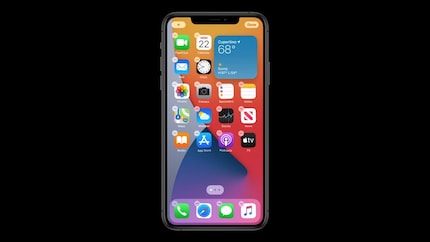
In Apple Today Screen, which is to the left of the first home screen, you can determine the size of widgets. However, these aren't condemned to live on the fringes of Today Screen - you can switch them to the home screen if you need to. There, application icons are automatically organised around the widget.
Smart Stack is a special widget. It's not a widget, but a window on all widgets. In Smart Stack, you can scroll through all your widgets and thus use the space that one widget would occupy in several ways. Smart Stack is also intelligent. In the morning, it shows you the news or the weather, your calendar during the day and in the evening your Apple Health checkup.
The 6×5 layout is a thing of the past.
Until now, you access the content you want on your iPhone always from the Home screen. For example, if you want to see a photo, you tap "Gallery" or "Google Photos" and the home screen disappears. Then you open the photo. The gallery preview disappears and the photo appears on the screen. These two complete screen changes are no longer necessary. With Picture in Picture, Apple promises more seamless integration of content into the software.
If you're wondering what it's for, just think of the YouTube overlay. It's one of the reasons I love NewPipe on Android so much, in addition to the built-in ad blocker. I can write a message in WhatsApp while watching a YouTube video.
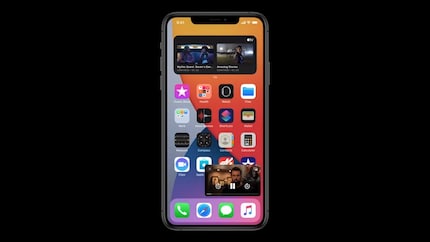
In Apple TV+, when you swipe up and down and return to the home screen, the window of the show you're watching is minimised and displayed as an overlay. If you drag the overlay off the screen, the image disappears in favour of a small arrow that brings the overlay back, but the sound continues to play.
This trick may be discreet, but it turns out to be brilliant. Craig Federighi didn't mention YouTube, but I sincerely hope Google follows suit. After all, this feature is long overdue on phones.
Siri is handy. My Siri speaks with an Irish accent. She's mainly there to read me the weather report, turn the lights on and off in my connected home and play music when I'm on my motorbike. In the last case, it's because I don't have to interact directly with my iPhone and for all these functions, I don't need visual feedback from the phone. Yet every time I do, iOS switches from the home screen to Siri in full screen. This interrupts what was being displayed just now, but provides useful information.
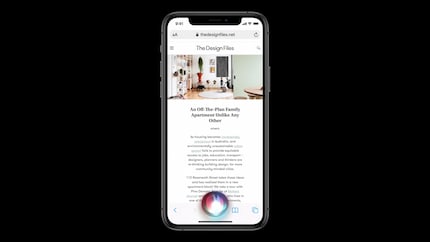
Apple wants to integrate Siri into the use of the phone in a more seamless way. Siri is therefore becoming more compact and she now only appears as a circle with an animation at the bottom of the screen, when you activate the command. If you ask her about the weather, the weather report appears at the top of the screen, like a notification. This gives Siri new possibilities, such as contextuality. In other words, the assistant can take your screen into account and, if necessary, perform actions that help you directly. Craig Federighi demonstrates this briefly by opening a recipe in Safari and instructing Siri to add things to his shopping list.
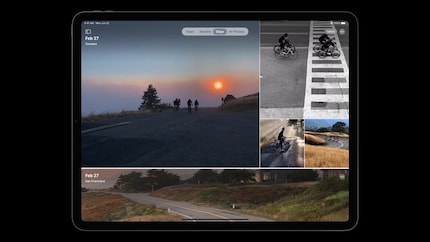
In addition to all the features that have been described in the news related to iOS, Apple also has some new features in store for iPadOS. In particular, the brand is taking advantage of the fact that an iPad's screen is larger than that of an iPhone. In the Gallery app, the iPad now includes a menu bar that can also be found in other applications, such as Notes and Files. Drop-down menus and other features bring iPadOS closer to the desktop experience. iPadOS also continues Apple's new philosophy of not interrupting the user's workflow, no matter what. When someone calls you, the entire screen, whether on iPhone or iPad, will no longer be monopolised by the call interface. If Craig called me, it would appear as a notification at the top of the screen.
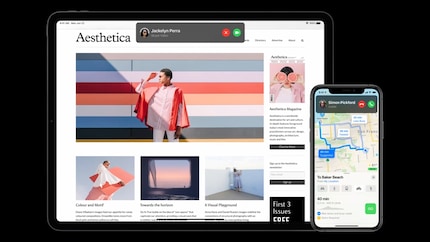
With Apple Pencil, you can now doodle by hand in Notes and other apps. Until now, the text you wrote by hand was a form of image. From now on, iPadOS should be able to recognise your handwriting and convert it into machine-interpretable text, without the handwriting aspect disappearing. The function is called Scribble and I'll be submitting my fly's feet to it as soon as I can. I think we're in for a laugh.
Apple is letting the principles that govern its view of privacy and its protection shine through at WWDC. Craig Federighi is absolutely right: the subject is important and privacy is a fundamental human right. Every principle and every concept must therefore be carefully questioned and challenged. After all, when it comes to privacy, it's the little mistakes that lead to disaster.
The company with the apple applies the following principles:
At this point in the speech, Craig does something that seems curious. What he says can be interpreted as "Here's a set of useless data that shows how often we've already collected non-useless data" without any great mental acrobatics. This is precisely why formulas such as "don't collect any useless data" need to be questioned. After all, it is not the users but those who interpret these sets in practice who decide what data is useful, when and why.
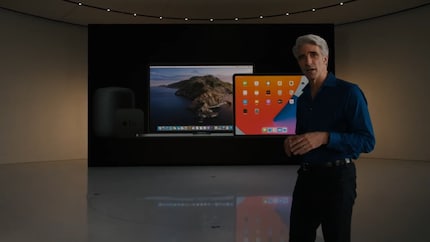
Although Apple goes to great lengths to protect your privacy, including a random ID to parse your questions to Siri, you should still take the time to question what the company understands by data security. It's possible that what Apple deems useful goes too far for you in some cases.
After more than an hour of live streaming, Craig Federighi's humour is welcome, because this year Apple is pulling out all the stops. The brand is constantly challenging itself, rethinking things and making even subtle improvements. When Craig starts dissing on the name of the new version of macOS and evokes a research mission in a minibus peppered with illegal substances, he introduces a little levity into his presentation. Thanks, Craig.
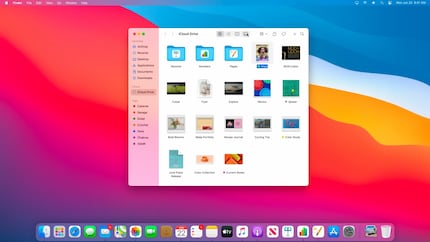
The new macOS design should offer users even more clarity. Even the smallest details have been rethought, from the radius of the corners of an icon to the size of a settings slider. The aim of the redesign was to reduce visual complexity as much as possible. The emphasis should be on user-generated content.
Many of the new control elements resemble their iOS counterparts. This is intentional, as Apple has unified the design language of the two operating systems as much as possible, or even three if you consider iPadOS to be an OS in its own right and not a derivative OS. Control Center has therefore found its place on macOS.
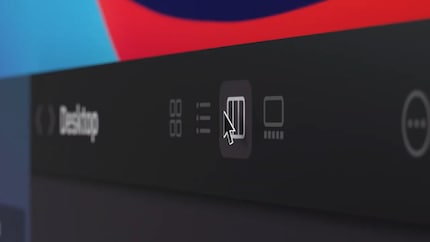
Finder has completely changed its look. It's no longer a bar at the top of the window with command items. Behind the files and the menu ribbon on the left are two areas, one saturated and one more transparent.
The display in Photos is spectacular now that images take up the whole window. Those extra few percent in width really make all the difference. The menu bar at the top of the screen is now transparent.
The Apple brand announced many other details during the hour-and-a-half-long presentation. But I've touched on the most important points above. For those interested in "the best of the rest":
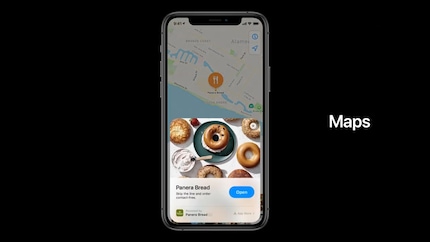
The path laid out by Apple is clear. Basically, humans need to be part of Apple's ecosystem. Machines must take the initiative and act semi-autonomously in the direction the user wants. Artificial intelligence must be more integral and conscious. An increasing number of facets of life will be covered and automation pushed to the limit.
The future of the Apple ecosystem looks enchanting and promising. But that's the impression left by all the talk of this type, whether from Apple or other manufacturers. Tests will show whether the new software lives up to its promise. The updates are already installed. I'll keep you posted.
Journalist. Author. Hacker. A storyteller searching for boundaries, secrets and taboos – putting the world to paper. Not because I can but because I can’t not.
From the latest iPhone to the return of 80s fashion. The editorial team will help you make sense of it all.
Show all